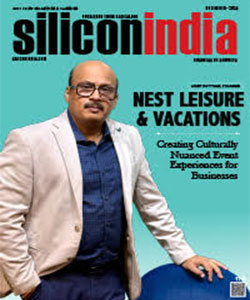Transforming Engineering Through Predictive Metrics: A Visionary Framework by Saumen Biswas

In the rapidly evolving software development landscape, organizations constantly seek innovative approaches to enhance productivity, improve quality, and accelerate time to market. Saumen Biswas, Senior Software Engineer at Upstart, has pioneered a revolutionary framework that transforms engineering teams from reactive problem-solvers to proactive decision-makers through the strategic implementation of predictive metrics.
"Traditionally, metrics have been reactive - reporting on what went wrong. My goal was to flip the script and create a predictive system that empowers teams to act before problems arise," Biswas explains.
From Observation to Prediction: A Paradigm Shift
At the heart of Biswas's methodology lies a robust framework that seamlessly connects core business outcomes such as time - to - market, customer satisfaction, and operational efficiency - to engineering metrics - like cycle time, lead time for changes (LTFC), deployment frequency, and defect density.
While software engineering has advanced significantly in data - driven decision-making, Biswas identified a persistent challenge: most organizations fail to effectively leverage engineering metrics to improve business outcomes. Traditional approaches use retrospective analysis without providing predictive capabilities to pre-empt delays or inefficiencies.
"These metrics aren't just technical indicators," Biswas emphasizes. "They're business levers. By quantifying the right variables, we can influence outcomes at the organizational level."
The framework transforms varied inputs into normalized, actionable insights by collecting data from diverse sources like GitHub, Jenkins, Vercel, and JIRA via an automated ETL pipeline. To detect trends and anomalies in real-time, it applies sophisticated statistical techniques, including regression analysis, time-series forecasting, and machine learning models.
Engineering Metrics That Matter
Its ability to surface the most impactful indicators is the power of this system:
Cycle Time: Measures time from pull request creation to merge, with weekly calculations of P50 and P75 times. Predictive models help forecast delays and streamline review processes.
Lead Time for Changes (LTFC): It tracks the entire journey from code creation to deployment, reflecting deployment agility and identifying seasonal patterns affecting productivity.
Deployment Frequency: The number of production deployments per week is directly correlated with time-to-market, team agility, and CI/CD effectiveness.
Defect Density: Higher reliability and customer trust is achieved by fewer bugs per thousand lines of code.
PR Size Distribution: Analysis shows smaller PRs improve overall productivity by facilitating faster reviews and lower integration risks.
Test Coverage: This ensures robust testing practices by tracking the percentage of PRs with associated test files and automatically flagging untested code.
Code Review Metrics: Tracks review time and feedback quality to enhance collaboration and code quality.
Customer Satisfaction (CSAT): Links engineering practices directly to business outcomes through customer feedback measurements.
Automation and Real-Time Visibility
Biswas designed the implementation strategy focusing on four key areas to ensure adoption and usability:
Workflow Automation: To ensure consistency and scalability, automated data gathering from multiple systems.
Interactive Dashboards: Platforms like Looker Studio provide stakeholders with advanced filtering capabilities to monitor key metrics and identify trends through heatmaps and trend lines.
Reporting and Notifications: Scheduled reports and threshold-based Slack or Teams alerts keep engineers and managers informed, while predictive notifications help teams act before deadlines slip or quality degrades.
Scalability: Cloud-based infrastructure and dynamic integration capabilities ensure the solution can grow with the organization, automatically detecting and including newly added repositories and pipelines.
This real-time feedback loop enables continuous improvement and creates a shared language between engineering and leadership—one where data becomes a catalyst for collaboration.
Results That Speak for Themselves
It has led to significant improvements through the implementation of this framework:
- Release frequency is increased by 15%
- Lead time for changes has been reduced by 10%
- Customer satisfaction and defect rates have measurable improvements
- Higher accuracy in forecasting inefficiencies
- Greater cross-team transparency and engagement
"Predictive metrics helped us uncover invisible blockers and hidden efficiencies," Biswas says. "We weren't just measuring faster—we were delivering smarter."
These improvements translate directly to business benefits, including faster time to market for new features, improved operational efficiency, and enhanced customer satisfaction.
Challenges and Future Directions
Biswas acknowledges the road wasn't without hurdles despite its success. It requires persistence and vision to ensure data quality across disparate tools, foster a metrics-driven culture, and adapt the system to changing organizational structures.
Biswas sees several promising directions in the future:
- Sustainability Metrics: Developing measures to optimize resource efficiency in software engineering processes.
- Cross-Domain Applications: Adapting the predictive metrics framework to other domains like healthcare or manufacturing.
- Advanced AI Integration: Incorporating generative AI for even smarter recommendations and prescriptive analytics.
"Metrics should evolve with the organization," Biswas adds. "The goal is not just prediction - but prescription. The future lies in systems that suggest the next best action."
A New Era of Engineering Leadership
It is not just Saumen Biswas's technical depth that sets him apart; it is his ability to translate data into strategy. In a time when software velocity and reliability are make-or-break factors, his work offers a roadmap for engineering leaders seeking to transform their organizations through data-driven decision-making.
His innovative framework doesn't just show where you've been - it tells you where you're going and how to get there faster and better. By connecting engineering metrics to business outcomes, organizations can achieve what matters most: delivering exceptional software that delights customers by making more informed decisions that drive growth and innovation.
Readers can access Biswas's complete research paper on "Predictive Metrics: Transforming Engineering Productivity and Software Quality" for more details on this groundbreaking approach.
About Saumen Biswas
Saumen Biswas is a senior software engineer at Upstart who specializes in building scalable platforms and data - driven solutions. He is passionate about software quality, DevOps, and AI-driven engineering, he's a recognized thought leader in predictive analytics for software engineering. His work empowers teams to achieve peak performance by transforming engineering data into actionable insights that improve business outcomes.



